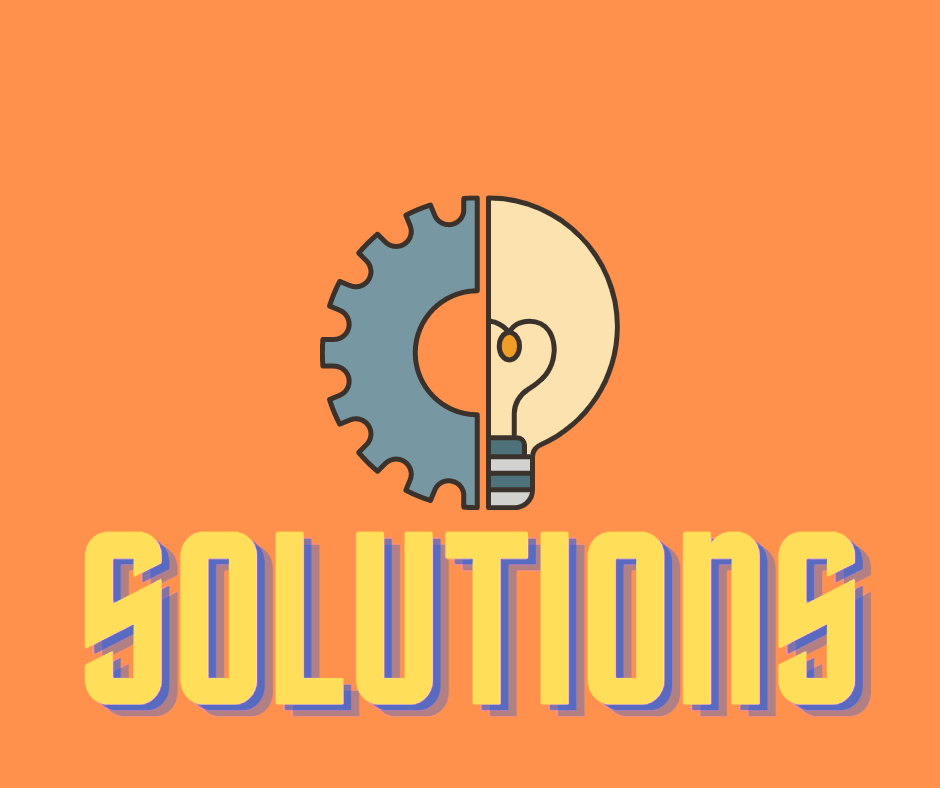How Shopify’s API Can Help You Build Custom Solutions for Your E-commerce Business?
How Shopify’s API Can Help You Build Custom Solutions for Your E-commerce Business?

E-commerce is a luxury allowing us to conduct our businesses online with a few strings attached. It makes all the information and customer management processes swift as ever.
However, where there is an opportunity, there are problems. To solve problems, we need solutions. That’s where Shopify’s API comes in as a middleman. Now there are other APIs out there. So why Shopfy’s API specifically?
Better optimization, better quality, freedom of choice, the satisfaction of the consumers, better personalization, and last but not least, better reviews which, as many of us know, are considered a pilot for taking off with a business. So let’s not waste our time in this section. Let us move on!
What’s an API?

API means Application Programming Interface. It is a set of tools for building software and apps. An API sets the way for different software to interact with each other. It acts as a middleman for different systems to exchange information.
With this, developers can create new functions by accessing data from other sources rather than building everything from scratch. For example, a company might provide an API allowing other developers to access their products or services, which they can set up into their applications. This can save a lot of time and effort and let companies expand and reach new consumers.
What is the Shopify API, and what does it do?
The Shopify API is the application programming interface for the Shopify e-commerce platform. It gives developers access to a vast range of functions and data within the Shopify platform, which lets them build custom solutions and integrations based on their needs.
With the Shopify API by your side, you can do product management automatically, process orders, manage customer data, and much more. You can also create custom checkout experiences, integrate with other business tools such as marketing and shipping, and access real-time data about their e-commerce operations.
Designed to be flexible, it makes things easy for you to interact within Shopify and build custom solutions. It supports various programming languages, including Ruby, PHP, Python, etc., and provides detailed documentation to help developers get started quickly. Whether you want to integrate your store with third-party apps, automate complex processes, or create custom customer experiences, Shopify API is the one for you.
In short, Shopify API allows you to expand and customize your processing power, improve the customer experience, and smoothen it. Whether you want to automate tasks, integrate with other business tools, or create a unique and custom e-commerce solution, the Shopify API has what you need.
How can it improve your e-commerce analytics?

The Shopify API has the ability to enhance e-commerce analytics by, as mentioned before, giving you access to real-time data and information. With this, you can get data regarding customers, sales, and orders, as well as their inventory, shipping, and payments. This data can then be analyzed to gain valuable insights, helping you decide solely on facts and numbers.
You see, you can use the Shopify API to get real-time data regarding consumers and their preferences, such as the products they buy and their buying patterns. Later on, this information can be used to personalize the buyer experience, target marketing campaigns, and improve the recommendations of products.
The Shopify API can be used to integrate with third-party analytical tools, Including Google Analytics and Adobe Analytics. These tools can give you a more detailed view of your e-commerce business, allowing you to keep track of website traffic, conversion rates, and customer behavior.
Monitoring sales and orders, such as the order numbers, the average order value, and the average shipping time is an addition that comes with the Shopify API. This data can help you identify trends, optimize your shipping and delivery processes, and make concrete decisions about inventory management.
Here are some examples:
- Customer Segmentation: With Shopify, people have the option to get information about a buyer’s demographics, such as their age, location, and buying history. Personalization jumps in here as the buyer experience, and target marketing campaigns can be done using this data. To date, this is one of the most well-known examples.
- Inventory Management: People in E-commerce businesses can track inventory levels in real-time and monitor stock levels, sales, and order data. This information can be used to optimize inventory management, reduce the risk of stockouts and overstocking, and improve the customer experience. This way, the entire process smoothens the Customer Management System (CMS) process.
- Sales Trend Analysis: This analysis helps get sales data and analyze trends, such as the processed number of orders, the average order value, and the average shipping time. Data like this can be used to identify opportunities for growth and make concrete decisions about sales and marketing. We all know that better decision-making is always considered a huge boost for the company.
- Customer Feedback: Customer reviews and feedback are very important as these can be analyzed to identify the scopes of improvement, like product quality, customer service, and shipping times. This data also can be used to make informed decisions about product development, customer service, and operations. The operations of the logistics department go swiftly throughout the whole process.
- Abandoned Cart Recovery: An interesting event, a loss of products, a business can use the Shopify API to track abandoned cart data, such as the items left in the cart and the reason for abandonment. This information can then be used to create targeted campaigns to recover lost sales and improve the customer experience. No worries when things go missing. Tracking them down feels like a breeze compared to the processes used previously.
Now you know the gains you will be getting when you put Shopify’s API into your E-commerce analytics section. It provides businesses with the exact raw data and information they need to grow their online sales and succeed in the competitive world of e-commerce. If you still have doubts, have a look at this video:
A list of solutions that will benefit from the Shopify API:

- Custom Shopping Cart Solutions: Shopify API builds custom shopping cart solutions that integrate with your existing e-commerce platform which is undeniably very useful to you. This allows you to improve your buyer’s experience.
- Inventory Management Systems: You can use Shopify API to integrate with your inventory management system, allowing your business to keep track of the inventory sales in real-time and optimize your business.
- Payment Solutions: People can use Shopify API to integrate with their payment process, allowing them to process payments securely and efficiently.
- Shipping Solutions: You can also use the Shopify API to integrate with shipping carriers, allowing your e-commerce business to do the whole shipping process automatically, reduce costs, and improve your buyer experiences
- Customer Relationship Management (CRM) Systems: This is one of the key processes that helps a business run. Monitoring customer buying patterns, the product they need, the process they go through the most, and their preferences.
- Marketing Automation Solutions: You can Integrate with marketing automation tools, allowing your business to automate marketing campaigns and target customers more effectively, and at the same time improve your buyer engagement.
- Data Analytics and Reporting Tools: You can use the API in data analytics and reporting tools, allowing you to track key metrics, such as website traffic, conversion rates, and buyer behavior.
- Third-Party Apps: Surprisingly enough, the Shopify API lets people connect with third-party applications without any hitches. All you have to do is follow the process.
These are just some of the few solutions. The Shopify API can efficiently provide perfect custom solutions to E-commerce Businesses. Needless to say, there are more, but the above-mentioned ones are the most popular that people prefer to get inside their online businesses.
Connecting the Shopify API with Product Personalization:
Let us give you a simple walkthrough of connecting your Product Personalization with Shopify Personalization. You will get a clear idea and surely won’t struggle in the future –
- Make a Shopify account and set up your store.

- Shopify admin will provide you with a Private API key and password, which you will have to obtain.
- Integrate the Shopify API with your product software using the given API key and password.
- After all these, you can use the Shopify API to retrieve product information, such as product names, descriptions, and images.
- Use the product data to let your buyers personalize their desired products, such as adding their names, photos, or custom designs.
- In real-time, use the Shopify API to update product information, such as pricing, inventory, and shipping information.
By following these simple steps, you can successfully connect the Shopify API directly to your Product Personalization and optimize your Customer Management process to absolute efficiency.
E-commerce businesses using the Shopify API for product personalization
Personalized gift stores, t-shirt printing companies, and jewelry retailers use the Shopify API for personalization. There is something these businesses have in common: they use the Shopify API as part of their product personalization software, giving their customers the ability to create unique, customized items like custom t-shirts, personalized gifts, and jewelry. A seamless, personalized shopping experience can be provided for buyers using Shopify APIs coupled with product personalization software.
Benefits and limitations of using the Shopify API for product personalization
Where there are benefits, there are drawbacks as well. If you have to get something, you must surely lose something. So here are some gains and limitations people will face when using Shopify API.
Benefits:
- Seamless Integration: The Shopify API can easily integrate with other software, such as product personalization tools, making it very simple for businesses to offer personalized products to their customers so that they can later personalize their own products.
- Real-Time Data Access: The Shopify API provides real-time access to product information, such as pricing, inventory, and shipping information, allowing businesses to offer an up-to-date and accurate shopping experience for the consumers of their segmented target market.
- Customizable User Experience: The Shopify API allows businesses to customize the user experience, such as the product personalization process, to fit their brand and customers’ needs. Also, it gives the user visualization enhancement based on their color choices.
Limitations:
- Technical Skills Required: Integrating the Shopify API with product personalization software requires technical skills and knowledge of APIs and programming. An expert is needed to set up the entire process so that the whole thing can be sustained and maintained later. Without this expert to help, this limitation will hold the business back.
- Limited Functionality: While the Shopify API provides a wide range of features, there may be limitations to what businesses can achieve with the API, such as limitations on customizing the checkout process. Unfortunately, there are lesser options here than the other features for people to tinker with.
- Potential Data Security Concerns: Sharing sensitive data with a third-party API, such as customer information and payment details, raises potential data security concerns. Those third-party APIs or apps can steal valuable data from your nose without your consent. This is quite harmful because, as we know, data is one of the most valuable resources in today’s e-commerce business world.
The Shopify API does provide a huge service, but it also has its complications. People can only handle it with the help of a technical expert. Things like these need to be maintained properly, or everything will be in jumbles, and believe us when we say that you do not want that!
Final Thoughts
End of the line. If you have come this far, then you will know what to do with your data and what to do with the amount of information you will be gathering, with proper customization of the Shopify API, integrating into your E-commerce business.
With its wide range of benefits, starting with increased efficiency, improved user experience, and enhanced customization options, Shopify API has become essential for any online business owner looking to thrive in the digital age with their business. So, if you wish to take the business to the big leagues, consider Shopify API as one of the leading anchors.



